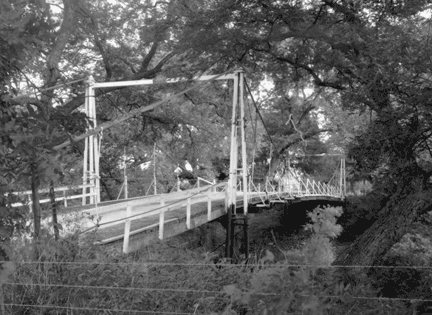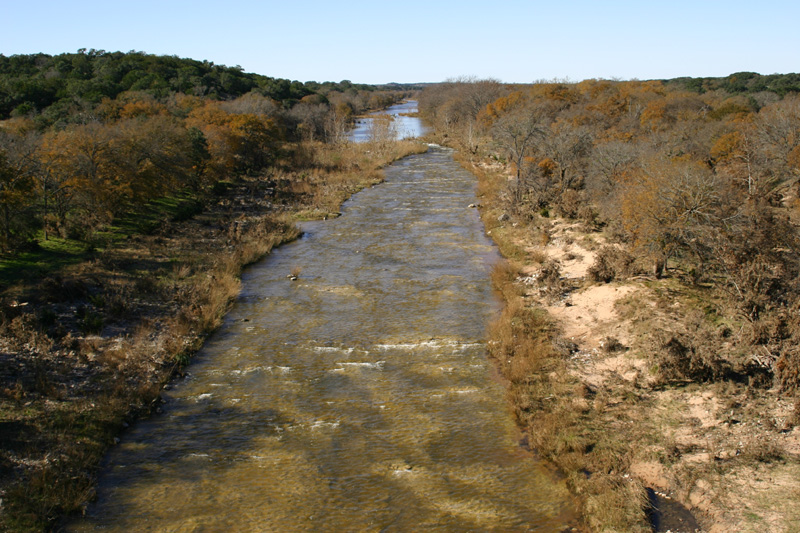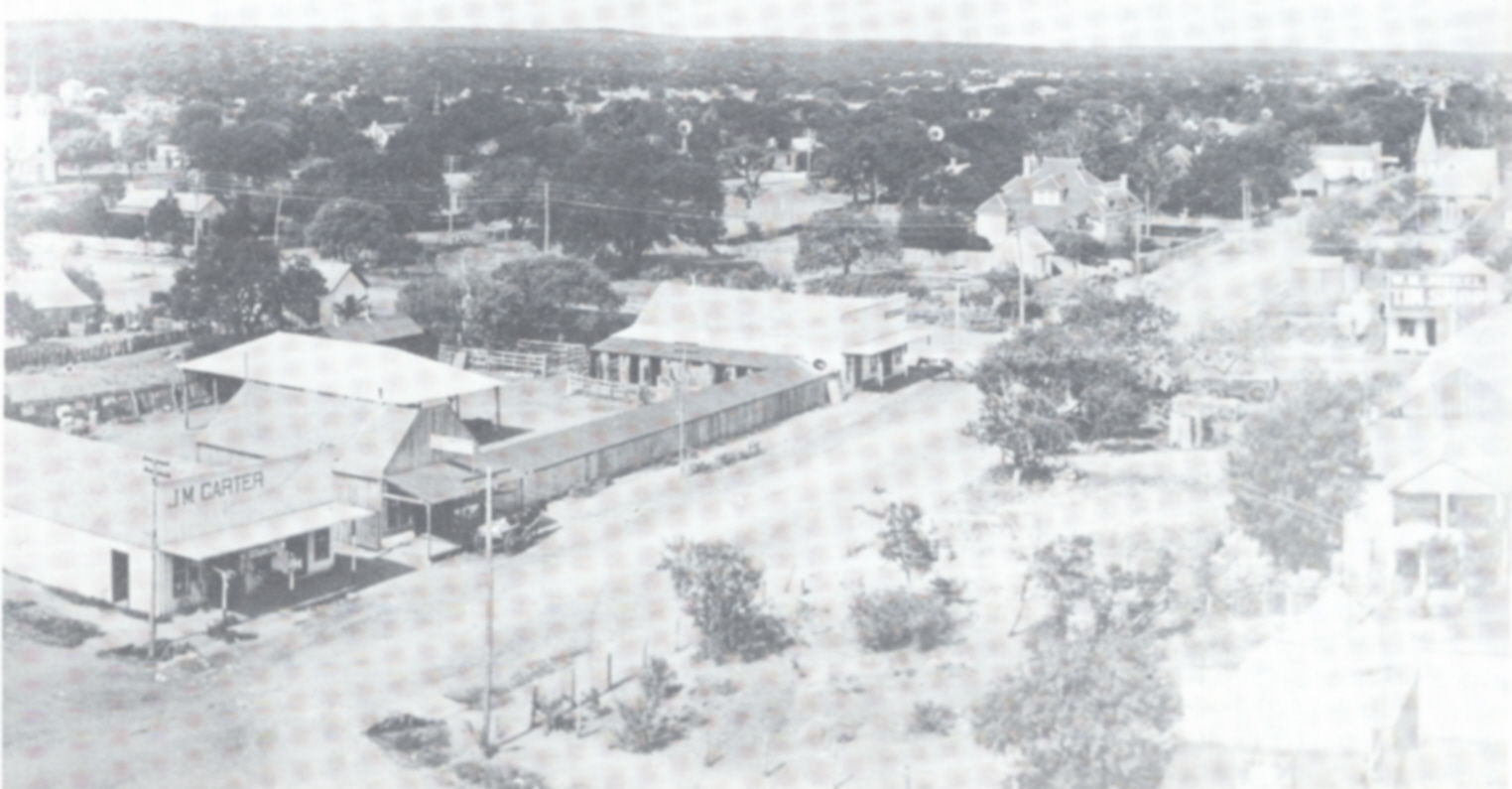Palo Alto College
History 1302
April 10, 2007
San Saba, Texas

Texas Small Town History Project Palo Alto College |
|
Josh Verette History 1302 |
Josh Verette April 10, 2007 |
San Saba, Texas 
|
|
A small town in Texas is where the majority of it is a group of close knit people that know everybody that is in the town. Certain stereotypes of a small town come to people's minds when they start to think about it. Some of the stereotypes that people come to believe are a couple of traffic lights, a Dairy Queen is the only fast food restaurant and, friendly people all over the place. This is how I think of a small town. From a personal experience, I lived in a big town and I moved to a small town and all of the stereotypes that I had seemed to be true. The small town of San Saba, Texas also fits all of these stereotypes and seemed to me to be a great town to write this research project over. I hope by sharing the information that I have gained through my interactions with the people that I know that live there and, stories that have been told to me. By the end of all of this I hope that I have given the readers a short overview of San Saba's history, economy and, people that live or have lived in this wonderful town.
San Saba is located in central Texas, along the northern edge of the Edwards Plateau. Two main rivers run through the area and they are the San Saba and Colorado Rivers. The area's features are hills that are wooded heavily especially around the rivers with pecan trees. Many animals are found to be in the area, from the underwater life that is in the rivers and the animals that are found on the ground. The naming of the town came from the river that the land of the county that it sits on. The county and river itself though was named by the Spanish governor at the time, Juan Antonio Bustillo y Cevallos. He named the land and the river after Saint Sabás because when the two were located it was on the saint's day for Saint Sabás. Many types of people lived in the area at one time according to historians that are familiar with the area. The majority of the people that lived in the area were Indians before the area was settled by white people. The Indians that that were in the area were the Comanches, Lipans, Cherokees, Wacos, Caddoes and Kickapoos. Indications tell people that they used the area as a camp ground where they could gather and hunt with ease.


In the early 1880's the structure of the jail house was being built so that the county could house different criminals. The jail was completed in 1884 and has been in the town ever since its completion. In the hundred year history of the jail, it has housed murderers, bank robbers and law violators of many different categories. The first story of the jail was used for the jailer and his family so that they could live at the father's work location. The second floor was to house the criminals that were caught in criminal mischief. One key renovation to the jail was made after an 1886 jail break took place, and after this incident a 12 foot high wall was built to keep the escapees locked up. The county jail is the longest standing building in the entire county.
As in all small towns in Texas, school is a big deal through the community, whether it is sports related or just teaching the children of the community to make them better. San Saba's school district is a better school in the state of Texas. Throughout the town's history there has been around 40 schools. Each of the schools that were in the town's history was neighborhood schools for the small communities that surround the town. Consolidation of all of the schools started to take place in 1911 and it became complete in 1982. Now days there are only three main schools districts for all of the small communities that surround San Saba. The three school districts are San Saba ISD, Richland Springs ISD and, Cherokee ISD.

There have been two major disasters to hit San Saba and the county that surrounds. The first and most devastating has to be the Flood of the San Saba River in 1938. The river raose so much that the highest crest was 45e feet above the flood stage and it destroyed most of the area that it covered. The river rose so much that it entered the business district of the town and covered almost one third of the city. Many homes were washed away and people that lived on the larger streams in the county homes were at risk also. Crops were destroyed, livestock was lost and, businesses and homes were ruined by all of the water damage. The estimated costs of all damage that happened to the town was from $100,000 to $500,000. The second disaster was not as severe but, it did take its toll on the town just as badly as the flood. It was the drought of 1953-1956 where over the four year period it rained only 63 inches. With it raining so little, the main source of income for the people of San Saba dwindled.

Transportation in San Saba was a slow process for the town. San Saba's production of roads, railroads and other forms of transportation took a long time. San Saba has one main line of railroad track that comes close to the town. The reason that the Santa Fe Railroad Company thought that the town should have a branch of the main line come through the town is because of the town's agriculture production each year. The main line that the Santa Fe Railroad Company built was 25 miles away from San Saba and it was completed in 1886. It took the company almost 25 years to decide that they were going to build an extension to come through town. If people that the construction of the railroad took a long time then what would people think about the roads in the town and surrounding areas. San Saba was the last county in the state of Texas to have its roads paved. Some of the roads in town were paved and even today the roads are not in good condition. One main feature of the town in transportation is the Beveridge Bridge. It is one of two suspension bridges that cars and trucks still pass on in the state. The bridge has had major work done to it three times, the main one after the flood of 1938. San Saba also has a municipal airport now, and it is there for local people that have airplanes and for people to land if need be.

JV: How did the flood of the 1930's affect the town?
EG: The water was up so high in 1938 was because the Colorado River was up 42 feet and it held it back. The water came all the way into town and was almost to the courthouse. The courthouse has to be at least two to three miles into town though.
JV: Did the river really mess anything up?
MG: I remember my mom and dad telling us kids that some of the neighbor's homes were washed away. We needed to be close to one another so nothing would happen to any of us.
JV: What type of work is around San Saba?
MG: Many of the people that live in the area are farmers and ranchers since the river does run through most of the county. Other people though do jobs that most towns would have to do also.
JV: When San Saba started out what was the transportation like?
EG: Many of the people in the town for the longest still had buggies that were driven around the town. The roads were mainly made of dirt until the fifties then some of the roads were paved.
JV: How about the railroad? Did it do anything for the town?
EG: To tell you the truth I'm not real sure about the whole railroad thing. I know that we have one and that it would come through on occasion but, it wasn't that big of a deal.
JV: Was school big deal in the town, like most other small towns?
MG: In my opinion the school was a school and not many of the kids actually graduated because they were needed to go and help their families make money. But later on in my life the school became the basis of the town.
JV: Uncle Earl you were young when the courthouse was built. Did a lot of the people enjoy the new courthouse?
EG: Many people would go to the courthouse on weekends for functions that would bring in everybody. Dances were a big thing. I have a lot of memories from my momma and daddy taking us to the courthouse for these events.
MG: You boys were always in trouble when you guys would go up there.
JV: Was racism a big thing in town?
EG: Do you mean towards black people or other people?
JV: Towards any people in the town.
EG: To tell you the truth, no not really. There weren't many black families in the area and when they would come into town. I guess you could say that there was. But there was more towards Mexican families than anything.
JV: Is their anything that you want me to know about the town I don't know?
MG: I can't think of anything else that I think that you should know. That book that you have tells just about everything that you need to know about San Saba.
EG: Same for me. If you have any questions just call you have our number.
San Saba is like the majority of other small towns in the state of Texas. The average income for most households is very small since the economy depends on ranching and farming. So for the past 15 years the population of the town has stayed around the same for the fact that most people just stay in the town. New businesses are brought to the town though every once in a while so that it will be diversified. The population of the people in the town are majority of the Caucasian race and the next group would be the Hispanic ethinc group. Other races are in the town but small number of those people make up the population.
Fagg, John E. "The Naming of San Saba." San Saba County History. Ed. San Saba County Historical Commission. 1983. pp. 472-473. This source gives a brief reasoning on how the town was named and some basic information.
Graves, Ray. "County Courthouses." San Saba County History. Ed. San Saba County Historical Commission. 1983. pp. 478-479. The courthouses that were in San Saba have all had a historical meaning to the town in someway. The book that I used gave a great explanation on each of the courthouses of the town.
"History of the San Saba Area," San Saba County Chamber of Commerce. 2000-2007. The San Saba County Chamber of Commerce webpage has a link that explains everything that has taken place in San Saba. It goes from the first days of the town to wait the main source of income is to people that live in the town. The group of people that are in the Chamber of Commerce fully explain what and how the town has got its start and, how the community has emerged into what it is like today.
Murphy, Victoria S. "San Saba County." The Handbook of Texas Online. 6 June 2001. The Handbook of Texas Online is a source that gives multiple amounts of information. It is collected by people that specialize in the study of cities and towns. This source of information talks about the archeological evidence of who lived in the area before. It also speaks about the schools, churches, and the type of economy that is in the area. This bit of information is important because, it explains just about everything that is needed to know how the town was built on and things of that sort.
Oliver, C.M. "First Baptist Church." San Saba County History. Ed. San Saba County Historical Commission. 1983. pp. 474-475. The First Baptist church was the first organized church in the town. The explanation of the church comes from someone that is a member of the church in present day.
Roberds, Loraine. "County Jail." San Saba County History. Ed. San Saba County Historical Commission. 1983. p. 481. The county jail house in San Saba is one of the only buildings that is still in use from the early settlers of the town. The book used for this source tells about the 125 year history and this building has stood for almost that long.
Roberds, Loraine. "History of Public Schools in San Saba County." San Saba County History. Ed. San Saba County Historical Commission. 1983. pp. 404-417. The Person that wrote this article in the San Saba History book is a local teacher during the 20's and 30's. She had prior knowledge of the school system in the area.
Roberds, Loraine. "Organization of San Saba County." San Saba County History. Ed. San Saba County Historical Commission. 1983. p. 475. The organization of the town took quite some investigation of this topic. The author of this piece has lots of knowledge of the town and I think she knows what the towns history like the back of her hand.